Carretera Austral Part 9: Caleta Tortel - Return to Coyhaique
Originally posted to El Cantar de la Lluvia on Friday, March 16, 2007
During my stay at the house I made friends with this dog. Ridiculously short-legged, initially cautious and distant, he eventually got used to my presence and greetings. He kept me company as I packed.

The night before, my hostess had made pan amasado, a slightly solid Chilean variety of bread, and she had invited me to have onces with her, tea time. She gave me a couple of loaves, enormous and heavy, so I had something to eat on my journey.
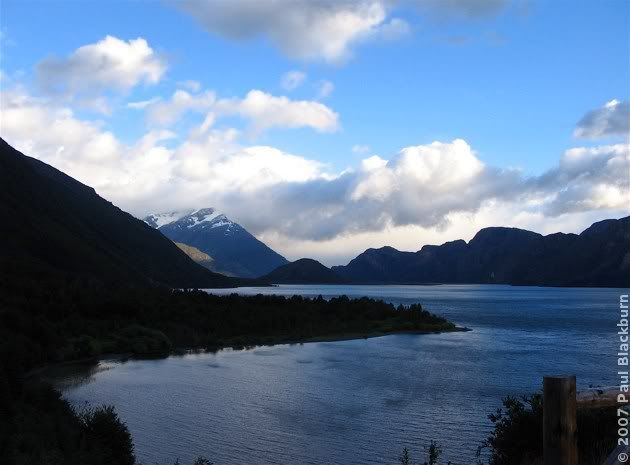
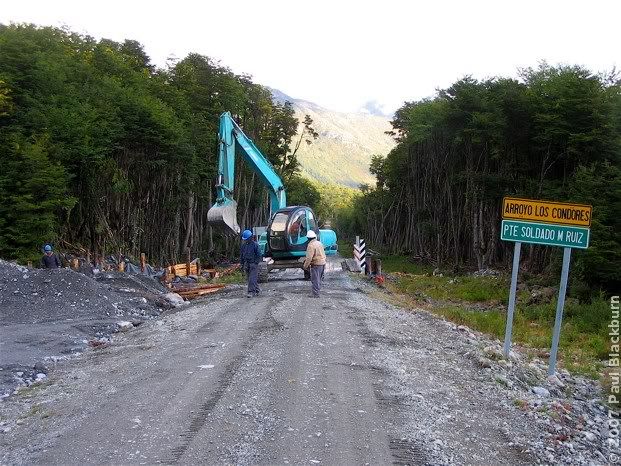
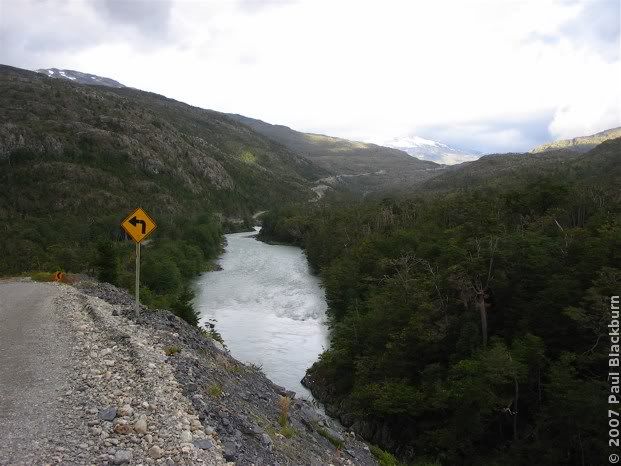
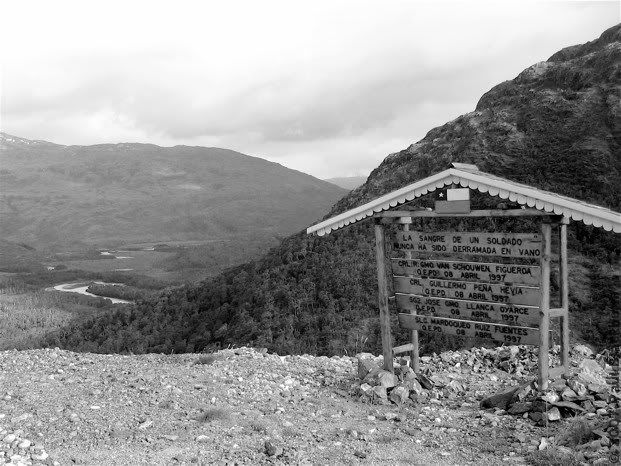

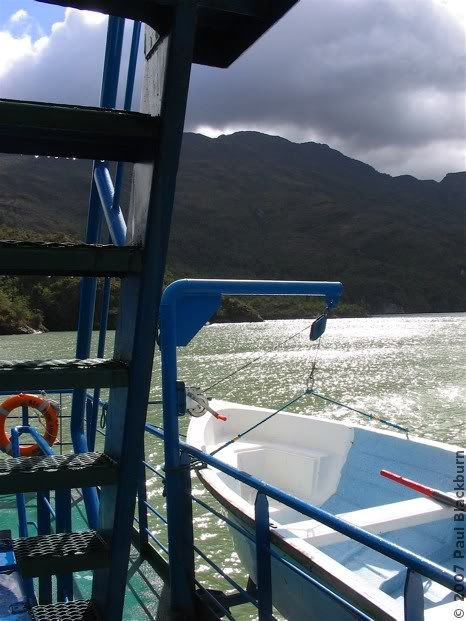
We reached Puerto Yungay, which looked completely different with the sun shining on it.
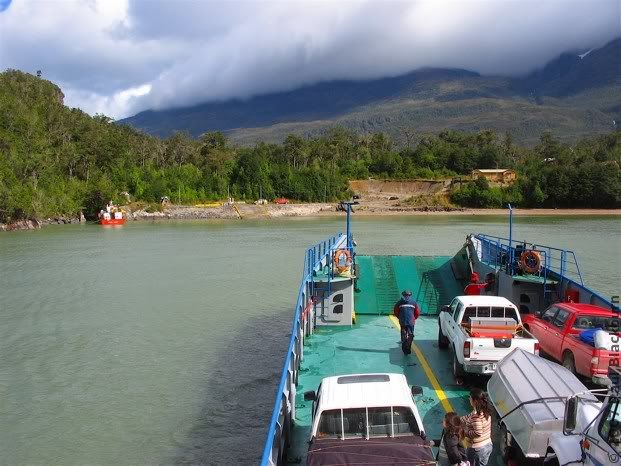
Here's the standard pic with the landmark at the end of the Camino Longitudinal Austral.
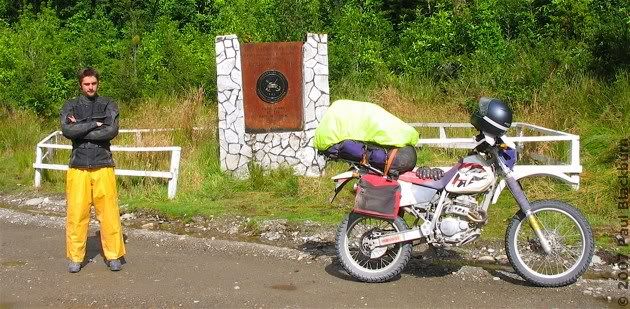
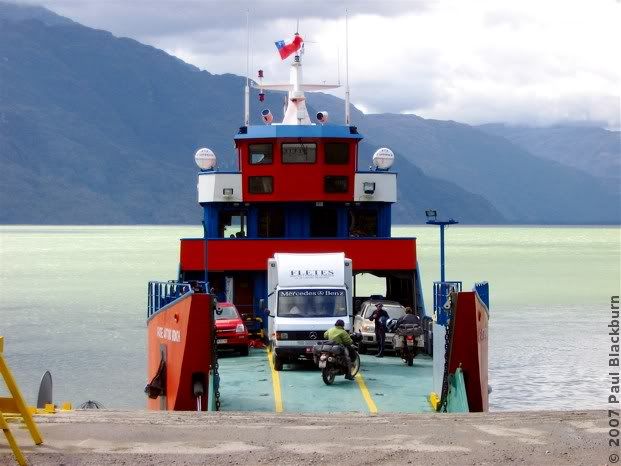
From then on, rain and intermittent sunshine.

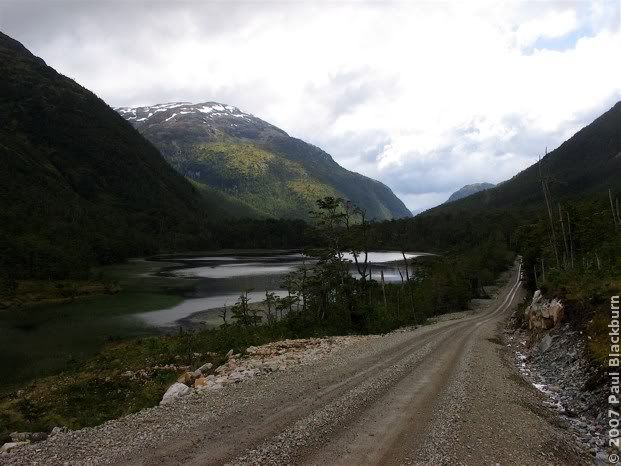
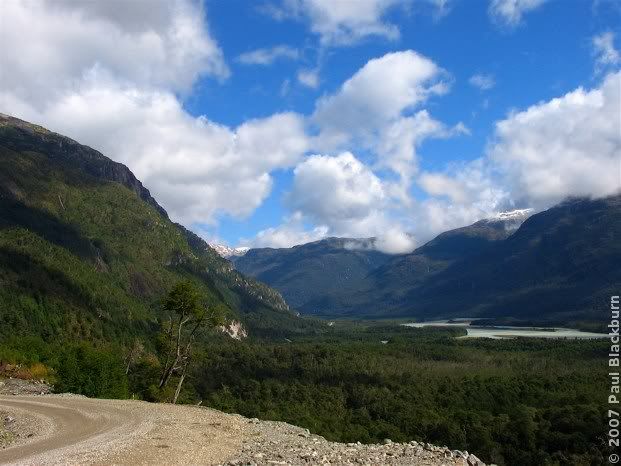
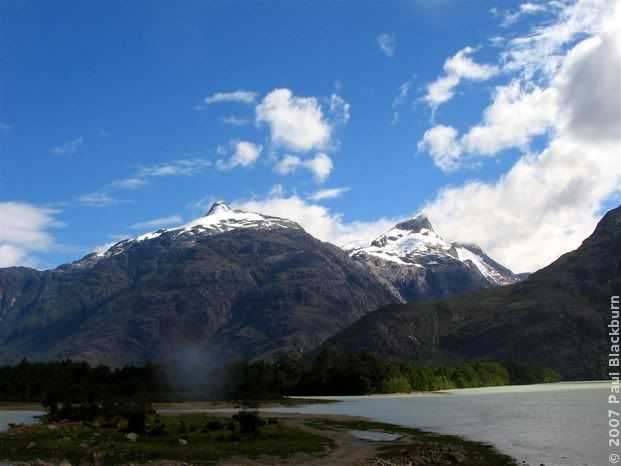

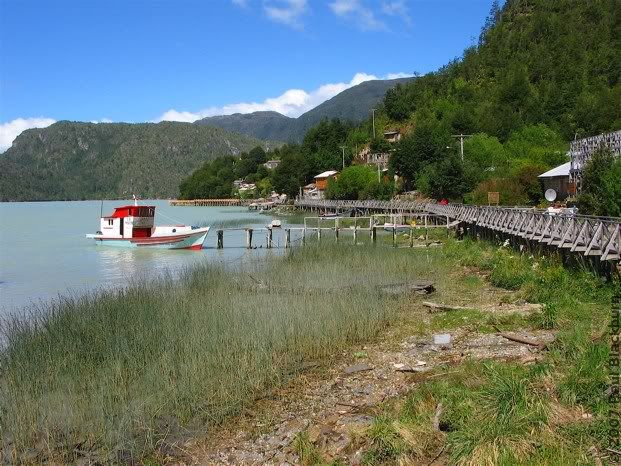
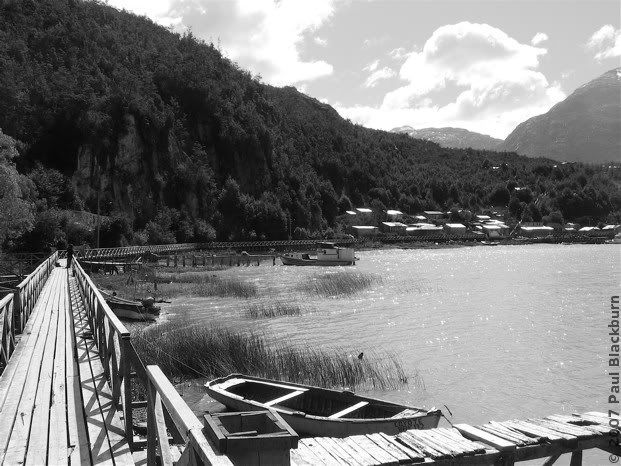
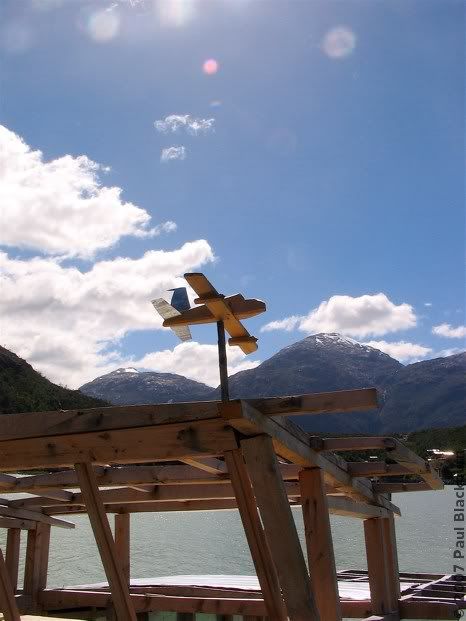
The clouds blotted out the sun at times, but the colours remained; particularly the deep turquoise of the sea.

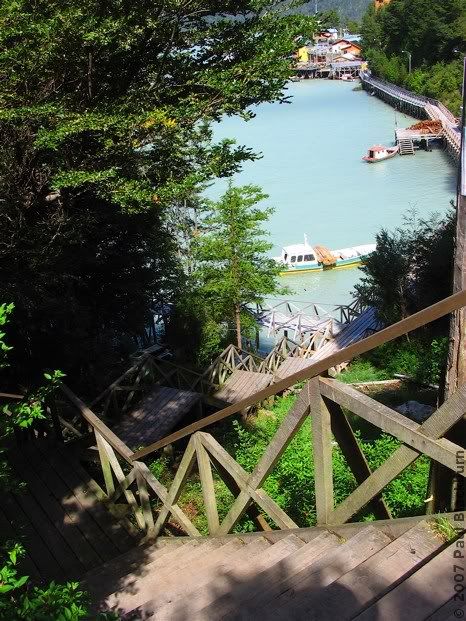
Caleta Tortel's library, and another building being restored.

The sections of recently-built walkway are immediately evident. Here, one of them cuts across a short inlet, decreasing the distance between two parts of the town.
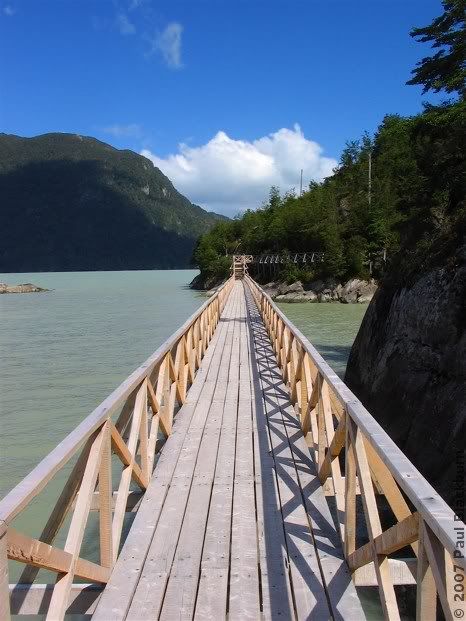
I saw a few dogs here and there, and mostly they just slept in the sun. The others I met were headed somewhere, with that very slight "I'm late, I'm late" cadence that dogs have when they're going somewhere.
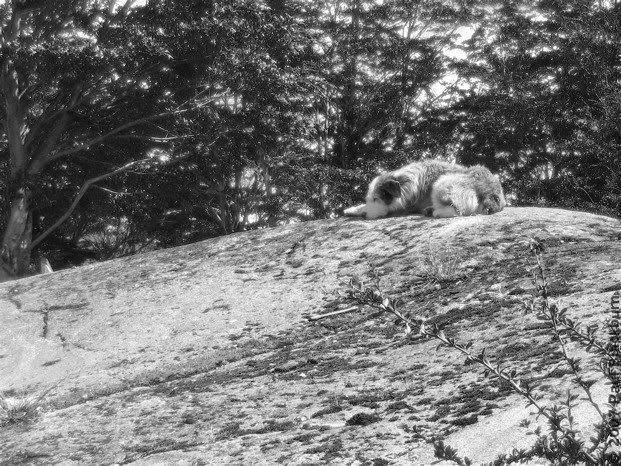
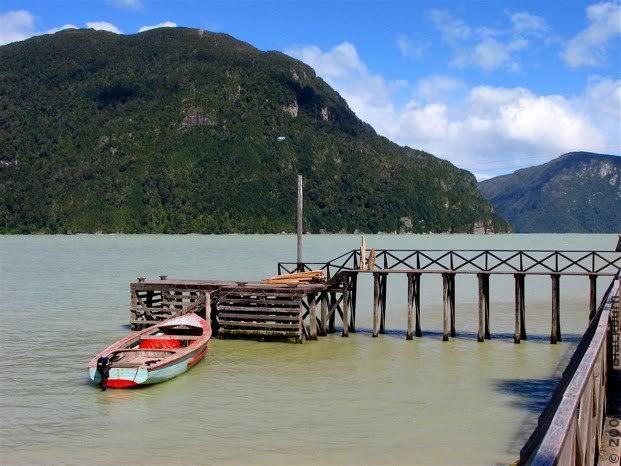
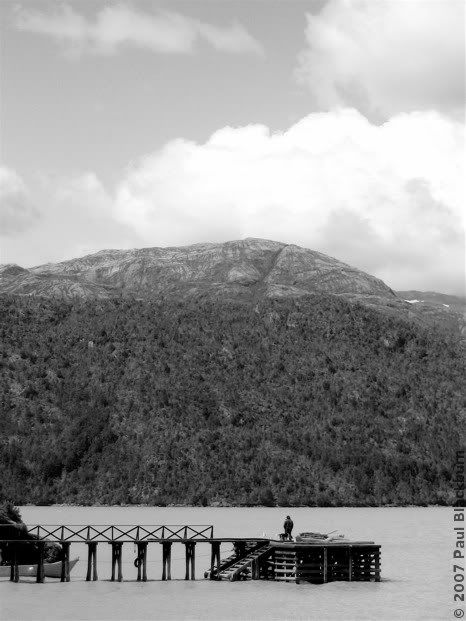
Sweating and very hot, I eventually reached the other end of Caleta Tortel, the beach.
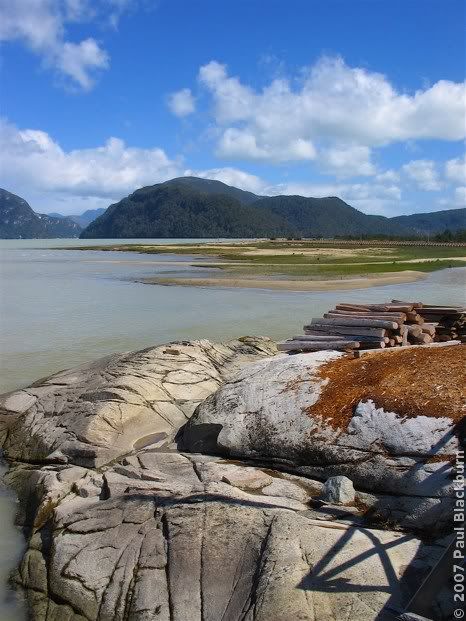
I'm not sure how people got to the beach before this walkway. Perhaps walking on the swampy vegetation?
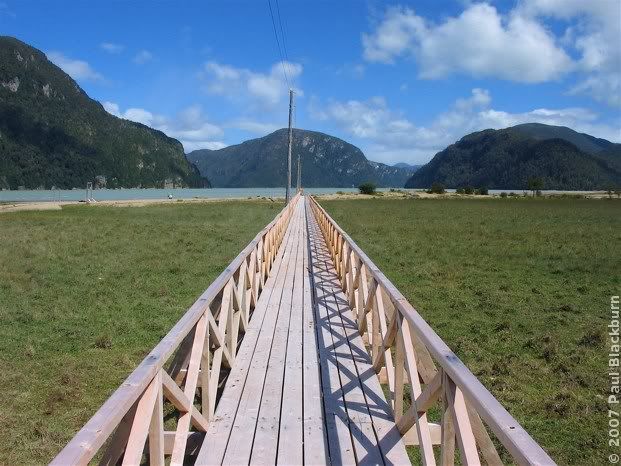

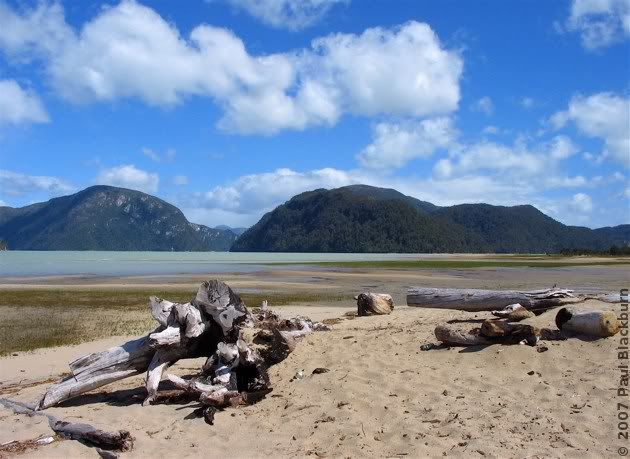
At the parking lot I met two germans, also touring on a bike. They were lightly loaded; I think they were staying in Cochrane.

That pic deserves a zoom:
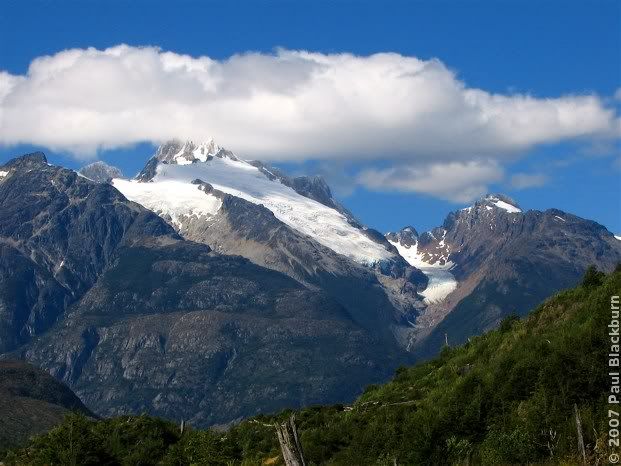

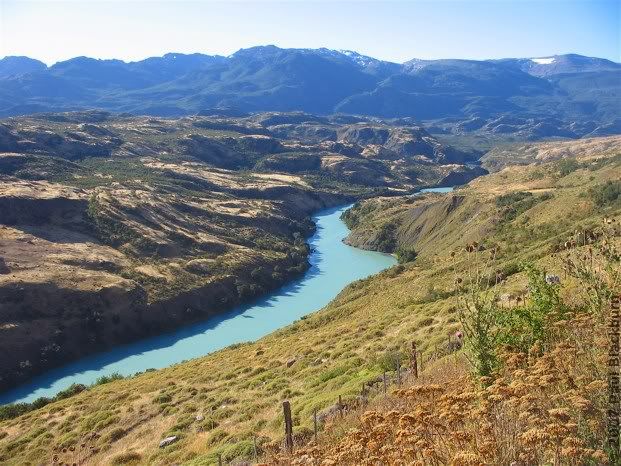
I refueled at Cochrane and called Camilo. I said I might try to reach Coyhaique that very day.
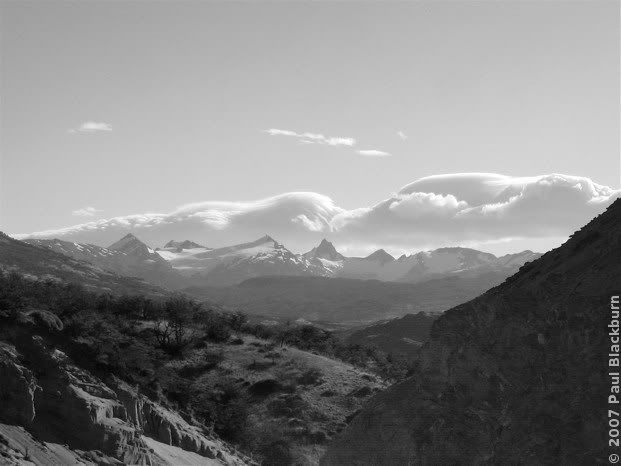
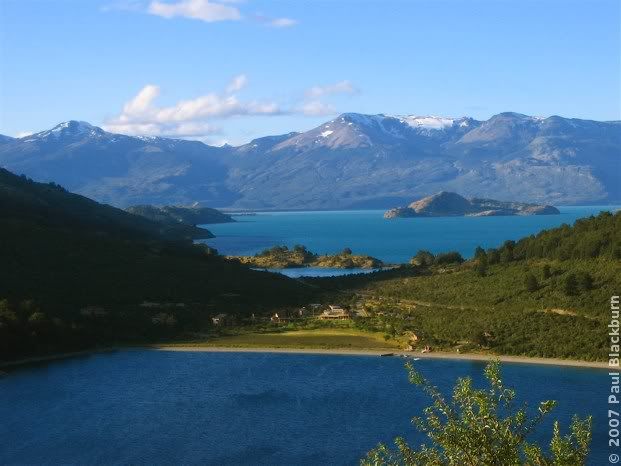
Coming up a steep slope, I noticed a rhythmic metallic screech. It was obviously coming from the chain. I made a mental note to find a place to stop, somewhere I might oil the chain again, though I had done just that before leaving Villa O'Higgins.
I reached a short cement bridge, a bridge over a roaring river beneath, somewhere below the dense vegetation. I stopped there in case another vehicle went by, to be as far as possible from the middle of the road.
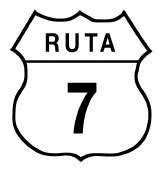 | Day 16: Caleta Tortel, return to Coyhaique at night. | 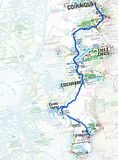 |
The alarm clock goes off. It is cold. 0700 am. The neighbour's horse is still munching grass, now barely audible.
The alarm clock goes off again. I move the curtains behind my bed aside. It's still cloudy. Today will be a long and tiring day: I have just half an hour to get up, load the bike, and set off to Río Bravo. There I will take the ferry back to Puerto Yungay, and carry on North, passing through Caleta Tortel. Time to get up!
During my stay at the house I made friends with this dog. Ridiculously short-legged, initially cautious and distant, he eventually got used to my presence and greetings. He kept me company as I packed.

The night before, my hostess had made pan amasado, a slightly solid Chilean variety of bread, and she had invited me to have onces with her, tea time. She gave me a couple of loaves, enormous and heavy, so I had something to eat on my journey.
It was cold, a morning type fo cold, the cool air of a day that's just starting out. There were occasional gusts of wind.


It was interesting to see the road in daylight, because on the way here it had been dark and raining.

There are several reminders of those that lost their lives in the construction of the Camino Longitudinal Austral.

I set off at 08:20 and arrived at 10:20, cold and raining. For the first time in the trip I didn't wear the top half of my chicken suit, opting instead to put my Polo jacket to the test, and it was fine.
Luckily the tiny shelter here at Río Bravo, a 3x3 metre hut, was a lot more welcoming than the one at Puerto Yungay. I shared it with several people. Shivering with cold, I listened to the conversation of two friends that were on the way up from Tierra del Fuego with their pickup and small aluminium boat. They told us how they would sometimes lower the boat into a fjord or river, and then go and explore that which could not be reached by land. Apparently they were looking for a nice place to buy some land.The ferry arrived, and I got on. The gentle swell required something more secure than simply leaning the bike against a wall, so I made good use of the tie-down strap that Tom gave me.


We reached Puerto Yungay, which looked completely different with the sun shining on it.

Here's the standard pic with the landmark at the end of the Camino Longitudinal Austral.

Just then I saw two motorbikes approach. It was Martin and Katya, whom I had met at the Copec petrol station in Cochrane. We had talked, and it turns out they knew Karl Heinz, from Buenos aires; they had met him personally at the December Horizons Unlimited reunion in Viedma, in Argentina.

From then on, rain and intermittent sunshine.


Bit by bit, the weather started improving.

Here, well on my way to Caleta Tortel (see this chapter's map), and a drop managed to connect with the camera lens, the only one on the whole trip. Damn.

I rolled in to the Caleta Tortel parking lot in bright sun. This is where visitors and locals leave their vehicles (if, of course, any of the Caleta Tortel residents ever were to own a vehicle), and then take one of the several wooden walkways radiating outwards and downhill.
I was too lazy (and cautious) to remove my knee and shin guards, my thermal trousers, or leave my jacket on the bike, so I hiked down the well-made wooden path in the general direction of the sea. Before doing so, I had asked people if it was ok to leave everything on the bike, and they said yes, but it's hard to leave behind city habits.
After a few minutes of walking on the uniform walkway, passing one house here, another house there, passing turnoffs to other wooden walkways, I came to a high point, from which you can see part of Caleta Tortel.

All transport is done on these walkways. The only earth that your feet will ever touch is that of the parking lot, and the sand at the beach, both situated at opposite ends of Caleta Tortel.
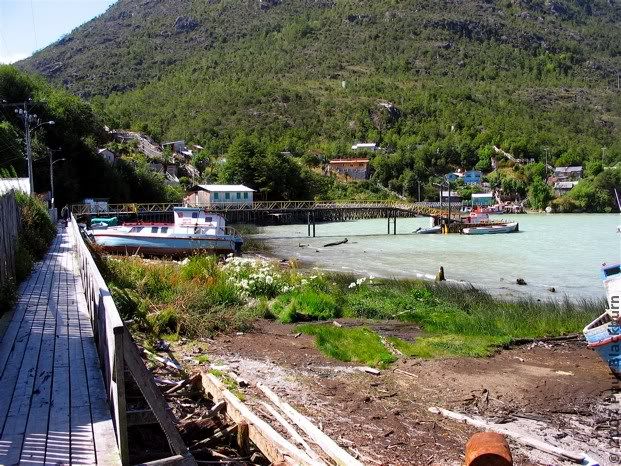

The main walkway, skirting the shoreline and with offshoots climbing up into the densely wooded hils, even has a tiny park, wedged against the steep hillside. There is enough room for two benches, and that's it.


The only modern elements in all of this are outboard engines and satellite TV dishes.

Perhaps due to it being Sunday, I saw only three or four of the 400 or so local residents. The Turistel guide mentioned that everyone says hello when they pass each other, and I can see why, since you will always come at least 30 cm close to anyone passing you in the opposite direction.



One of the many promontories towards the south end of the caleta did not have a walkway the whole way around it, so I heaved up the hundreds of wooden steps to the top, passing by house after house. So tranquil, so beautiful. I couldn't shake the feeling that I was playing one of the Myst or Riven games.

Caleta Tortel's library, and another building being restored.

The sections of recently-built walkway are immediately evident. Here, one of them cuts across a short inlet, decreasing the distance between two parts of the town.





I'm not sure how people got to the beach before this walkway. Perhaps walking on the swampy vegetation?



And with that, it was time to turn back. I reached the bike feeling like rider stew. Let us not forget the waterproof riding boots, and those fucking socks that come loose and bunch up around your toes. As I walked, I made plans to burn every single pair of socks of that brand that I owned.
At the parking lot I met two germans, also touring on a bike. They were lightly loaded; I think they were staying in Cochrane.

That pic deserves a zoom:

I rode through the stunning area south of Cochrane, this time facing a crosswind.


I refueled at Cochrane and called Camilo. I said I might try to reach Coyhaique that very day.

On the way to Puerto Río Tranquilo I was buffeted by a strong crosswind, coming of the Lago General Carrera, galloping unimpeded over the short grass and bushes, its full force heaving at me broadside.
What happens then is what I presume happens to all motorcycle travellers: you shit yourself. The road generally has two usable tracks, sometimes three, but none wider than 30 centimetres, sometimes less. These tracks are lined on either side by rather deep stones, loose gravel, sand, anything that will throw a bike off course. Riding in a straight line, at 80, 90 km/h, there is not problem, but as soon as a gust blows, the bike leans into the wind. In doing so, the bike pivots about the centre of gravity, a point that lies somewhere below the seat. Whereas your torso and head move into the wind, your wheels move laterally in the opposite direction, placing them dangerously close to the edge of your track. If the gust is strong enough, there is no option but to ride up on the gravel and hope for the best.
Having a very loaded bike only makes matters worse, not only because the extra weight and a light front wheel makes keeping the bike stable on gravel exceedingly difficult, but also because the centre of gravity is higher than normal, and therefore the lateral displacement of your wheels, in case of a gust, is larger than with an unloaded bike.
And let's not forget that gusts disappear as suddenly as they come, leaving you leaned over and with nothing to counter your inclination.

The last picture of the day. Later on, as soon as the sun set, the temperature plummeted.
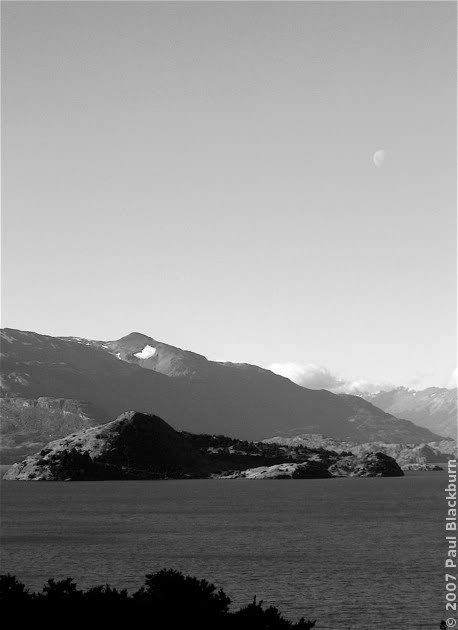
And does this day's narrative end here? Upon refuelling at Río Tranquilo I considered it. I knew the town, I knew where I might stay. But it would also mean unloading everything, and then packing the bike in the morning, not to mention the tedious routine of getting your things out of your bag, sleeping, showering, finding food, packing again. And more money, and more wasted time.

So I passed by a family-run general store, bought a packet of ramitas, biscuits and a diet coke. That was my lunch and my dinner. I put on all the cold weather gear I had with me, and set off North.
The wind got stronger. Ironically, night fell at exactly the same point as it had on the way South, travelling with Camilo and Tom, at Puerto Murta. My main headlight, useless as ever. 35 Watts lighting up nothing in particular, perhaps the branches overhead, thanks to my (solidly-founded) unwillingness to adjust its position.
I was soon back in the jungle. I say jungle, because the word forest does not capture the density of the trees, the undergrowth, the nalcas, thrusting into the road, the enormous silhouettes of the trees jutting out against the stars, the moon behind some solitary cloud.
Coming up a steep slope, I noticed a rhythmic metallic screech. It was obviously coming from the chain. I made a mental note to find a place to stop, somewhere I might oil the chain again, though I had done just that before leaving Villa O'Higgins.
I reached a short cement bridge, a bridge over a roaring river beneath, somewhere below the dense vegetation. I stopped there in case another vehicle went by, to be as far as possible from the middle of the road.
I won't deny that I was scared to be there. Completely alone, strange noises going on around me. Birds, animals, the wind in the trees, insects. I just took my gloves off. My helmet stayed on so I could avoid re-adjusting my neck warmer, and in case I had to start off in a rush (yes, I was that spooked).
I oiled the chain with the syringe again, put everything back in the saddlebags (blessed be mine saddlebags, blessed art thou among all my luggage, for allowing me quick and easy access to frequently-used items), and I set off again.
The accumulated dust on the inside and outside of my visor was lit up by the light coming from my illuminated front mud guard, making seeing extremely difficult. Things got better if I tilted my head back slightly, which I did for several more hours. It goes without saying that this is not too comfortable.
I find it hard to communicate what it felt like to be there, at night, completely alone, alert to any more strange noises my bike might make, switching between mental calculations of estimated-time-of-arrival and cruise speed; and possible mechanical problems and their consequences.
To get an idea, take a look at the mini map in this chapter's header (it's a link to a larger map). Look for the bit between Río Tranquilo and Villa Cerro Castillo. See what there is to either side of the road? Precisely: there is nothing there. For over 100 kilometres of jungle, I did not see another soul or trace of human presence, save for the road, the road.
Slowly, slowly, because of my horrendous light, I made progress. I met no more than five vehicles on the the whole trip. When two cars passed me, both going at a ridiculous speed, I got behind them, trying to make the best of their light. We soon reached the end of the damp compacted road surface, giving way to dry, dusty dirt, and I was forced to retreat, and to resume my slow puttering.
The hours passed by, and I was tired and cold. In these situations, some riders begin doing strange things. Some whistle, though they may never whistle in daily life. Some sing into their helmets, tone-deaf as they may be. Others chant like a Tibetan monk. And there are those that make up a radio drama, act out the voices and sprinkle it liberally with ludicrous elements. I did all of this, and more. Anything to break the monotony. I you think about how the privacy of a shower will bring out these flights of dubious virtuosity, imagine what it's like in the privacy of your own helmet, where the closest spectator is a pudú nibbling on some berries some thirty kilometres away.
The vegetation became less dense, the road became more dusty and more stony. I was approaching the Cerro Castillo zone. It was the only bit of the trip that had been cause for concern before I set off from Río Tranquilo, because I knew I'd have to do it at night. There is a lot of loose stuff on the road surface, and it is very windy.
And so it was: I now rode on a mountain trail, facing a relentless, chilling wind, and beyond the feeble yellow light cast on gravel, washboard and stones, was the sky, fuller of stars than it has ever been; and in front of me, towering over me, Cerro Castillo, the waning moon behind it, a cutout of black-on-black, and the most stunning part of it all: clouds forming from the peaks and needle spires of Cerro Castillo, as if I was watching it all on time-lapse video.
I stopped, just before a long winding descent, on the side of the hill, with nothing but rocks and stubby grasses around me, the wind tugging on my bike, my helmet. In the distance, far, far away but offering me a stunning spectacle nonetheless, was the the moon, and the clouds. It was the most spectacular view on the whole trip.
When I saw the few lights of Villa Cerro Castillo, I knew the hardest part of the journey was over. From then on the road was paved, and I just had to deal with the wind on the plains south of Coyhaique. In total, I had done 600 kilometres, 500 of them on the dirt.
I rolled into Coyhaique in a daze and sporting questionable sanity, some time around 01:00 AM. I called Camilo. "Mi nombre es peliiiiigroooooooooooo" I croaked, perhaps revealing too much of my temporary loopiness. "You son of a bitch, you're in Coyhaique!" was his answer. I giggled like a boy who had done something naughty, but who regretted it not.
Camilo was having unreasonable amounts of beer with the English lads, whom I'd meet the next day, and he told me to go to his residencial, one with a strange name on Calle Simpson, further up the road than where our favourite hag spun her web.
I rode up to the place, visions of soft beds and hot showers dancing in my head. I looked for a doorbell. No doorbell. I called Camilo. "No, you have to knock on the door. Go through the metal gate and knock."
I rang the bell, but that acheived nothing. I head someone moving on the second floor, and waited 10 minutes for something to happen. Nothing did. Pissed off, I decided to leave.
I got on the bike, started the engine, and revved it hard a couple of times. Have you ever heard a completely uncorked XR250R revving hard at 01:00 AM outside your window? :-)
Round and round I went, unable to believe that the promised land of Coyhaique was turning out to be an extension of the desolation of Cerro Castillo. I eventually found a residencial with a light on outside, and the owner opened the door for me. He had a room out back, in a small two-storey house behind the space for the cars. On the first floor, a sofa, a table with a used ashtray on it, some chairs, and in the corner, some boxes full of toys and other random crap. It looked like the last stages of a move. He showed me the room, the bathroom. Perfect, I'll stay. And I did: I threw everything to the ground beside the bed and jumped in.
The last thing I remember thinking before falling asleep, still feeling the effects of Cerro Castillo, was I bet this house is haunted and I'm going to wake up with something profoundly nasty standing at the foot of my bed.
And with that, I fell asleep.
Next Chapter: Puyuhuapi - Chaitén
Labels: carreteraaustral, rides, trips

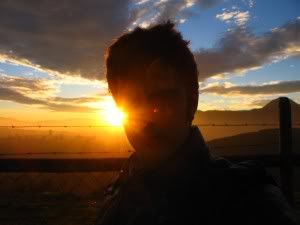
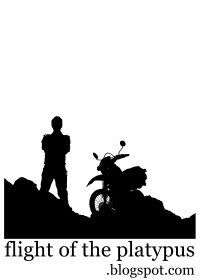

 The Lagoons of the Santuario de la Naturaleza 2: Laguna Los Ángeles
The Lagoons of the Santuario de la Naturaleza 2: Laguna Los Ángeles Race Day At Leyda 4
Race Day At Leyda 4 El Tabo and the Central Hidroeléctrica El Sauce
El Tabo and the Central Hidroeléctrica El Sauce Exploring The Hills Around Lampa
Exploring The Hills Around Lampa A Different Route To Baños De Colina
A Different Route To Baños De Colina The Mines of the Cuesta La Dormida
The Mines of the Cuesta La Dormida The Frozen Lagoons of the Santuario de la Naturaleza
The Frozen Lagoons of the Santuario de la Naturaleza Second Mass Demonstration "For A Fair Tag"
Second Mass Demonstration "For A Fair Tag" First Mass Demonstration Against The 'Tag'
First Mass Demonstration Against The 'Tag' Enduro In Lagunillas
Enduro In Lagunillas Embalse El Yeso and Termas Del Plomo
Embalse El Yeso and Termas Del Plomo Ride To Peñuelas
Ride To Peñuelas Cerro Chena
Cerro Chena Race Day at Leyda 3
Race Day at Leyda 3 Baños de Colina 2
Baños de Colina 2 Carretera Austral: Epilogue
Carretera Austral: Epilogue The Little Giant and Termas del Plomo
The Little Giant and Termas del Plomo Back on Two Wheels
Back on Two Wheels 2006 Photographic Retrospective
2006 Photographic Retrospective Race Day At Leyda 2
Race Day At Leyda 2  Quantum Optics III in Pucón
Quantum Optics III in Pucón Meseta In Chicureo
Meseta In Chicureo Pick Up Your Beer Bottle And Fuck Off
Pick Up Your Beer Bottle And Fuck Off  Planes And Hills
Planes And Hills Cut-Off Road
Cut-Off Road Lagunillas
Lagunillas Laguna Verde 2
Laguna Verde 2 Ride To Anywhere But Aculeo
Ride To Anywhere But Aculeo Cerro El Roble, Second Attempt
Cerro El Roble, Second Attempt Baños De Colina
Baños De Colina Some Walk On Water...
Some Walk On Water... Race Day At Leyda
Race Day At Leyda Almost Cerro El Roble
Almost Cerro El Roble Off To Curacaví with Andrés
Off To Curacaví with Andrés La Serena, Part 3: Back To Santiago
La Serena, Part 3: Back To Santiago  A Bull, Two Cows and a Chilean Fox
A Bull, Two Cows and a Chilean Fox Escape To Cuesta La Dormida
Escape To Cuesta La Dormida Valve Adjustment
Valve Adjustment La Serena, Part 2B: Valle Del Elqui
La Serena, Part 2B: Valle Del Elqui La Serena, Part 2A: Coquimbo and La Recova
La Serena, Part 2A: Coquimbo and La Recova Mud And Pine Trees
Mud And Pine Trees La Serena, Part 1
La Serena, Part 1 Pimp My Exhaust
Pimp My Exhaust Ride To Laguna Verde
Ride To Laguna Verde Ride To La Mina
Ride To La Mina Ride To Termas El Plomo
Ride To Termas El Plomo Camping in Colliguay
Camping in Colliguay Ride To Portillo
Ride To Portillo Ride To Olmué and Con Con
Ride To Olmué and Con Con Siete Tazas
Siete Tazas Watching The Departure Of The Day That Brought Me Here
Watching The Departure Of The Day That Brought Me Here Buenos Aires Motorbikes
Buenos Aires Motorbikes Ride to Talca with the Adach Group
Ride to Talca with the Adach Group Las Trancas '05
Las Trancas '05 Towers and Hills
Towers and Hills María Pinto, Melipilla, Aculeo
María Pinto, Melipilla, Aculeo Me and my Carb
Me and my Carb




0 Comments:
Post a Comment
<< Home